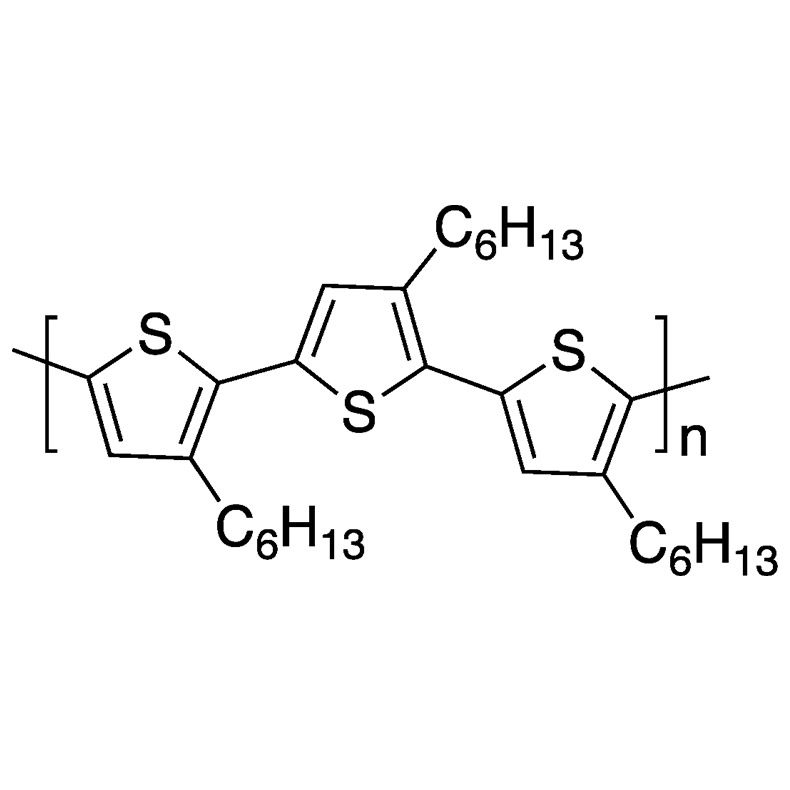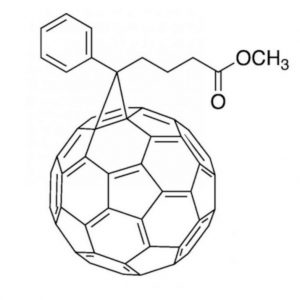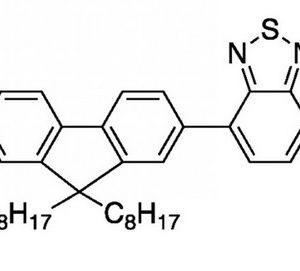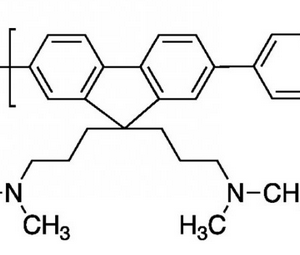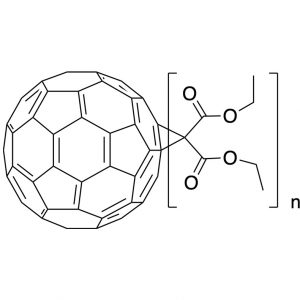Your cart is currently empty!
P3HT
SOL4106
P3HT is used as an electron Donor to acceptor materials such as PCBM (SOL5061) to make proven benchmarked bulk heterojunction solar cells and organic transistors.
Description
P3HT – SOL4106
CAS: 104934-50-1
P3HT (poly(3-hexylthiophene-2,5-diyl) is a p-type conductive polymer chain that is currently one of the most widely used materials in photovoltaics due to its interesting electronic properties.
One of the most studied applications of P3HT is the development of organic photovoltaic cells with heterojunctions, which are produced in solution because they are light, flexible, and inexpensive to manufacture. These cells are developed using a mixture of (poly(3-hexylthiophene) and phenyl-C61-butyric acid methyl ester (P3HT:PCBM).
We offer three grades with different molecular weights for a variety of research purposes.
Choose between:
Mw = 70-90 kD, low pdi – P3HT RR 90-95% (SOL4106A)
Mw = 50-70 kD, low pdi – P3HT RR 87-92% (SOL4106B)
Mw = 30-50 kD, low pdi – P3HT RR-87-92% (SOL4106C)
Safety Data Sheet: SDS-SOL4106
Technical Data Sheet:
| Acronyms: | P3HT |
| Chemical Name: | Poly(3-hexylthiophene-2,5-diyl) |
| CAS# | 104934-50-1 |
| Color and Texture: | dark brown, solid powder |
| Molecular Weight: | N/A |
| Absorption, λmax (Media): | N/A |
| Emission, λmax (Media): | N/A |
| HOMO (eV): | -5.2 eV |
| LUMO (eV): | -3.2 eV |
| Melting point (°C): | N/A |
| Solubility (Solvent): | Chloroform, chlorobenzene |
| Other: | N/A |
References:
(1) Fullerenes: Non-transition Metal Cluster For Rechargeable Magnesium Battery Cathode
Author(s): Ruigang Zhang, Fuminori Mizuno and Chen Ling *
(2) Donor‐Linked Fullerenes: Photoinduced electron transfer and its potential application
Author(s): Dr. Hiroshi Imahori Prof. Yoshiteru Sakata. First published:29 October 2004
(3) Fullerene Materials for Lithium-ion Battery Applications
Author(s): Loutfy R.O., Katagiri S. (2002). In: Ōsawa E. (eds) Perspectives of Fullerene Nanotechnology. Springer, Dordrecht (Fullerene Materials for Lithium-ion Battery Applications
(4) Prospects for Using C 60 and C 70 in Lithium Batteries
Author(s): L. Seger, L. ‐Q. Wen and J. B. Schlenoff, ECS – The Electrochemical Society
Request pricing for larger quantity
* Price subject to change without prior notice
Products for Research and Development. Laboratory use only by qualified personnel. The user should read the available SDS and be aware of any precaution to take for the safe manipulation of these materials. Solarischem shall not be held responsible for any damage resulting from the use or handling of these products. Any product can be discontinued, specifications altered or price changed at any time without prior notice. The specifications and structures do not guarantee any product’s suitability for the client’s applications or uses.
